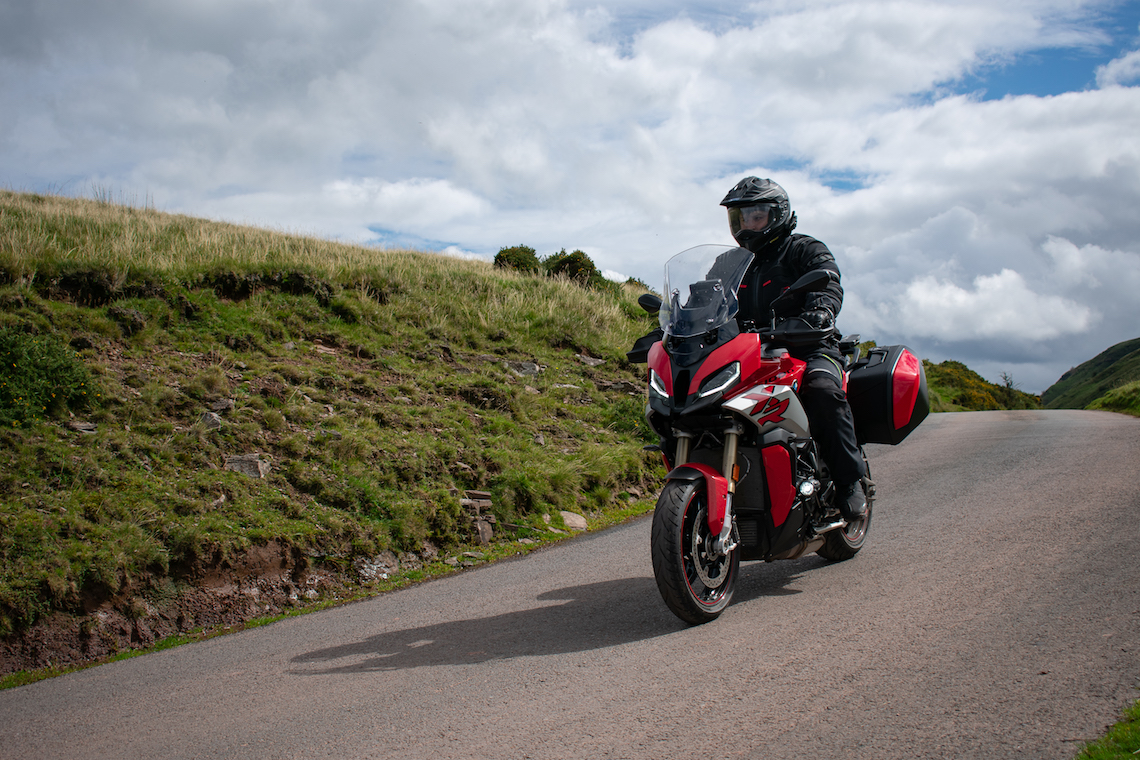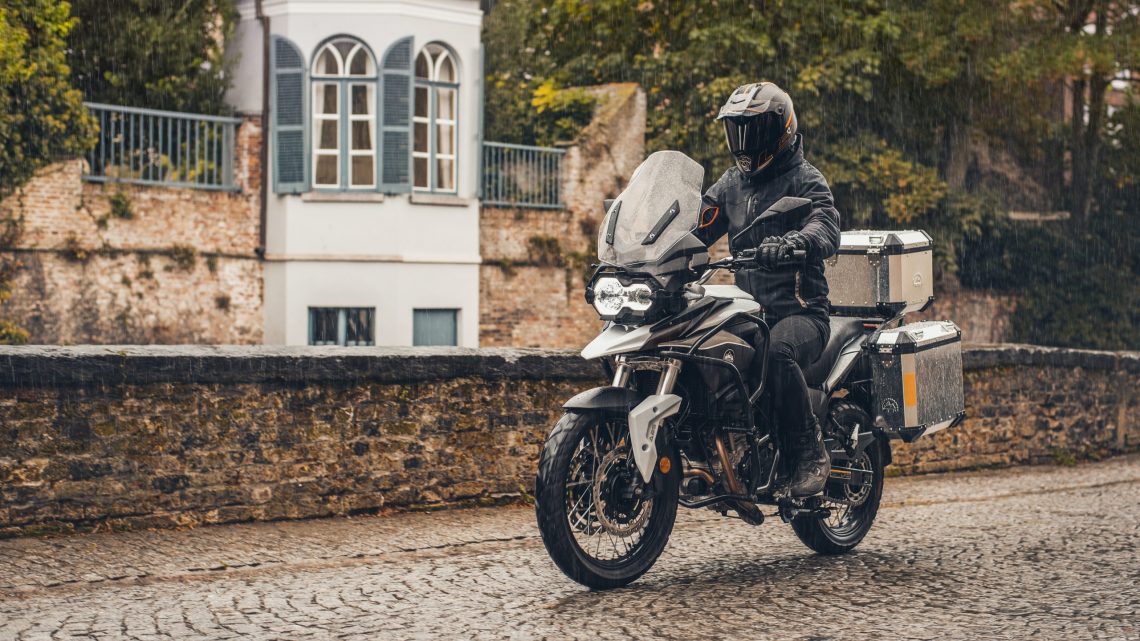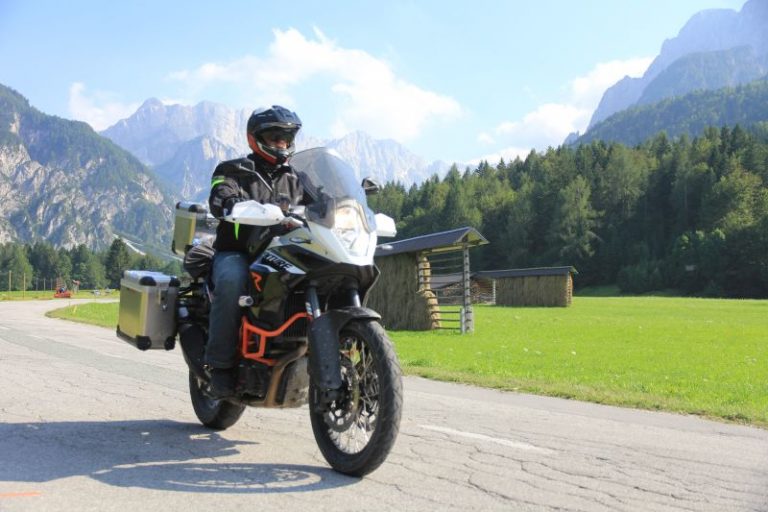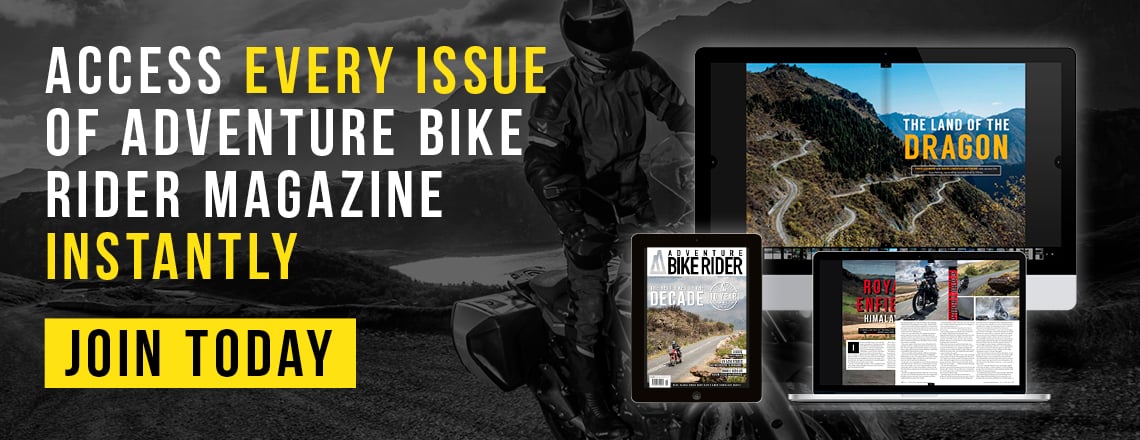Nervous about handling your big adventure bike through traffic and in slow-speed situations? Glynn Garrad shares his advanced rider techniques on mastering slow control.
“I want to improve my cornering” is something I hear a lot. But, although most riders want to corner quickly and smoothly, it seems seeing someone riding slowly, with complete control and confidence, is far more impressive, so why not get some practice in and learn how to do it properly.
Slow manoeuvring comes more naturally to some people than others, but it still needs practice regardless of how competent you think you are. But, if you’re finding it difficult, then break it down into bite size pieces.
How to master slow control
Our first lesson is slipping the clutch. Yes it does wear the clutch, but when done properly, not as much as you think and it can give you so much more control at low speed.
Try riding in first gear and bringing your speed down to walking pace, bring the clutch in so that you are able to maintain that speed and gently blip the throttle without any speed change. If you feel any speed change when you do this then bring the clutch in a fraction more.
The idea is to have just enough drive from the engine to keep you going, but not enough to upset the balance of the bike (the balance from front to back).

Low speed steering
The next step is to experiment with the steering. At low speed weight transfer will have a considerable effect on the bike.
With the bike travelling at about walking pace gently press down on one of the foot rests and the bike will start to move in that direction, you will also notice the handle bars will turn, so let them, but control it. You can press down on the handlebars as well but it will need to be gentle until you get the hang of it. It is very tempting to tense up, so keep your arms nice and relaxed.
Keep you head up and your eyes fixed on where you’re going, don’t be tempted to look down at your front wheel or the handlebars. I’m sure you’ve heard that before but it’s as relevant at low speeds as it is when cornering quickly.
How do you control your speed?
This is best done by gently using the back brake. Try not to go on and off the rear brake (this will affect your balance from front to back as we mentioned earlier) and instead find the biting point and hover around it.
I wouldn’t advise using the front brake as is can be difficult to apply gently, meaning that you have the back wheel driving and the front wheel slowing you down. Once again, this will throw you off balance which will make life more difficult.

Once you’ve nailed these basics, it’s time to put it all together. Set up the speed and clutch control before you get into the situation you are going to deal with. This way the bike is balanced before you begin the manoeuvre.
Plan where you are going, thinking where you want the bike to end up and how you intend to get there. I know that sounds obvious, but it’s a common mistake that people make, and they find themselves over-steering or tightening their turn angle half way through the manoeuvre, causing them to lose balance and drop the bike.
Keep your practices short. Your clutch will get hot if you slog away for hours, so keep it to five or ten minutes. Or pick simple manoeuvres that will put less strain on your clutch, such as on and off your driveway or finding a parking space. Soon you’ll be throwing U-turns and figures-of-eights that will have any DVLA examiner nodding with approval.
One final thing: It’s worth nothing that this advice is for riding on the road. Use of the clutch and brake can be different off-road, and if you are going up or down a hill.
Gain access to every ABR masterclass
In each issue of Adventure Bike Rider magazine we feature a riding masterclass, showcasing the skills you need to handle your adventure bike both on the road and on the trails. You can read them all online by signing up to the digital library, which gives you access to the latest issue of ABR, as well as a decade’s worth of back issues.



